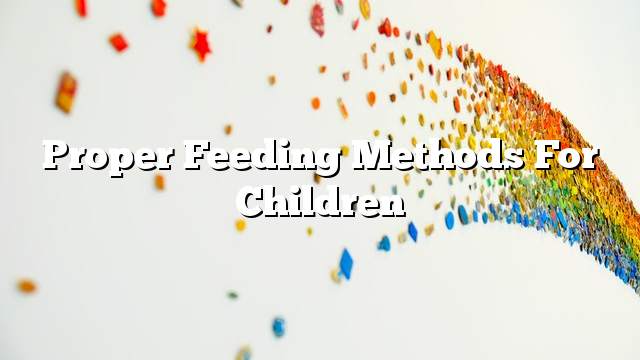Newborns
Breastfeeding provides proper nutrition for children. Breast milk is easy to digest and contains vitamins, proteins, fats, and antibodies that help the child fight viruses and bacteria, reduce the risk of asthma and allergies, and children who get breast milk only during the first six months after Births are less likely to develop ear, respiratory and diarrheal diseases,
It should be noted that the number of baby meals during the first month ranging from 8-12 times a day, and in the second month ranging from 7-9 times a day, that is, the first six months of the baby needs to feed every two to three hours and the length of this period of a child However, when the child reaches 6 months of age, his food and energy needs exceed the mother’s milk supply.
Children aged 6-10 months
The baby begins at 6-10 months of age to eat certain foods in addition to breast milk, such as:
- Cooked vegetables: sweet potatoes, carrots.
- Mashed fruits: Peaches, apples, bananas, avocados.
- Grilled meat: beef, chicken.
- Mashed Beans: Lentils, chickpeas, and beans.
- Low amounts of unsweetened milk.
Children aged 10-12 months
Most children at this age are fed home-cooked and iron-rich foods. They need 750-900 calories a day, along with breast-feeding, which provides the baby with 400-500 calories, about 720 milliliters a day,
Examples of solid foods prepared home include:
- Cooked vegetables such as carrots and peas.
- Pasta, and cheese.
- Protein-rich foods: such as meat, poultry, fish, and many more.
- Whole grains: such as barley, oatmeal, and wheat.
Children of school age
In this age, the child needs healthy, nutritious and rich foods that support the healthy growth of his body, including the following:
- Whole grains: 6-11 daily quota, equal to the whole slice of whole grain bread, or half a cup of rice, or one ounce of grain, these include oats, barley, rice, quinoa, and wheat.
- Vegetables: 3-5 servings per day, equivalent to the quota of fresh vegetables, or three quarters of a cup of cooked vegetables, or fresh vegetables.
- fruits: 2-4 servings daily, equal half a cup of hard fruit, or three quarters of a cup of juice, or a medium-sized fruit.
- Dairy products: 2-3 servings per day, equal to one and a half ounces, and include milk, yogurt or substitutes if the child has an allergy to lactose.
- Proteins: 2-3 serving daily, equal to 2-3 ounces of cooked meat, or one fish, or half a cup of cooked seeds, or one egg.
- Zinc: In oysters, liver, beans, peas, beef, cocoa, and many others, zinc can improve memory, especially in boys.
- water: Drink about 6-8 glasses of water a day.
- Healthy fats: These include:
- Unaturated monounsaturated fats from vegetable oils, such as: peanut oil, olive oil, canola oil.
- Polyunsaturated fats (omega-3, omega-6) are found in sardines, salmon, sunflowers, corn, flaxseed oil, walnuts, and others.
Ways to encourage children to eat lunch
There are several tips to follow in terms of child nutrition:
- Participation of children in the choice of food they will eat.
- Children thrive various foods at an early age.
- Reduce the intake of foods and beverages that contain high calories, such as soft drinks, sweetened beverages, desserts, as well as getting children to drink milk.
- Place candies in children’s dishes; encourage them to have dinner but not to make them a daily habit.
